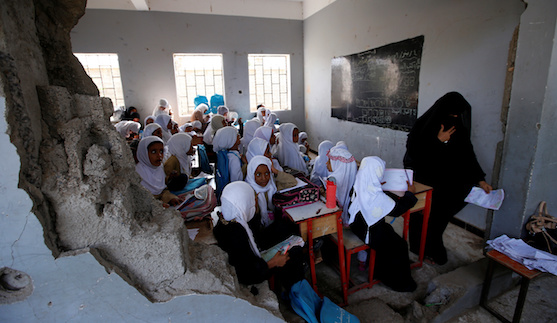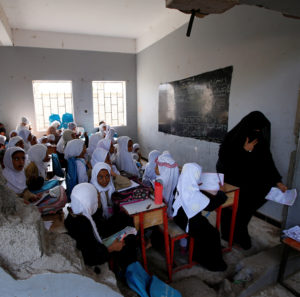
18.10.19
The value of ‘victim assistance’ in international agreements on civilian protection and weapons policy
By Elizabeth Minor
Cluster munitions Explosive Weapons Landmines Nuclear Weapons Protecting civilians Protecting education from attack Toxic remnants of war

In this new paper, Article 36 looks at the content and implementation of commitments to ‘victim assistance’ in recent weapons treaties as well as the Safe Schools Declaration, arguing that similar commitments are both necessary and valuable to include in future international agreements on weapons policy and civilian protection.
The impetus for several recent international agreements to prohibit or restrict specific weapons or practices in armed conflict has been to prevent future suffering. Treaties prohibiting anti-personnel landmines, cluster munitions and nuclear weapons have been agreed with the intention that there should be no further victims from the use of these weapons. The Safe Schools Declaration, an international political commitment, aims to prevent both humanitarian harm and the denial of the right to education from attacks on educational facilities and the military use of schools.
If prevention is a key goal, those that have already been victimised – or may be harmed after these agreements, from the remnants of weapons or other impacts of past actions – also continue to have rights, and needs, that must be addressed. The concept of ‘victim assistance’ obligations, which features in these four international agreements, responds to this fact.
Notwithstanding concerns and resistance to the inclusion and implementation of victim assistance in international agreements, obligations to better acknowledge and respond to harm through victim assistance provisions should be considered a duty by states – and is emerging as a consistent element of international instruments addressing weapons policy and civilian protection.
This paper provides an overview of: the development of victim assistance obligations in international agreements; how these have been or might be implemented in practice; and what implications and lessons past policy and practice might have for future international frameworks addressing weapons policy and civilian protection. It argues that victim assistance commitments are practical and essential to include, both in principle and for the ultimate impact of these international instruments for communities affected by violence – even if policy and practice has so far been imperfect.
Going forward, the following general recommendations are offered to stakeholders – including states, practitioners and experts (of whom affected communities are a key constituency):
- Victim assistance should be included in future international agreements on weapons policy and civilian protection that address humanitarian harms. Different issues may require different types of victim assistance response. Nevertheless, future commitments, the definition of victims, and the structure of state responsibility should continue to follow or build on the standards and understandings set by previous agreements. The Convention on Cluster Munitions in particular can provide a basis, through giving the most detailed elaboration of these standards, structures and definitions in Articles 2, 5 and 6;
- Implementing victim assistance should be approached as a way to bring focus and resources to victims, and improve provision to the highest possible standards, within an international framework of cooperation and assistance. This should be engaged with as an opportunity rather than a burden for states;
- To ensure that victim assistance activity is meaningful to people on which harm has been inflicted, the engagement and inclusion of victims in international discussions and national policy development and practice should be a key first step in implementation;
- The activities that might be prioritised in order to best implement victim assistance may vary depending on the issue area. In considering this, and mapping needs and gaps in provision, states and practitioners could examine which individual or collective rights have been most affected, as a way to structure their work;
- Victim assistance can and should either be integrated into or contribute synergistically to broader sustainable development, humanitarian or human rights activities and objectives. Where victim assistance is covered by broader interventions, mechanisms to ensure that victims’ rights will be addressed and the specific requirements of victims should be highlighted. Where specific programming is being considered, the issues of whether and what new structures might be necessary should be reviewed to avoid duplication;
- In relation to the above, in funding or otherwise resourcing victim assistance through agreements between states, to international organisations or civil society, donors should ensure that more general support will cover victim assistance (though mechanisms such as specifying this in agreements), and that more specific funding is integrated effectively in to the broader context.
Download this paper
 ‘Victim assistance’ in international agreements on civilian protection and weapons policy: Understanding the value to past, present and future instruments
‘Victim assistance’ in international agreements on civilian protection and weapons policy: Understanding the value to past, present and future instruments
Discussion paper
October 2019